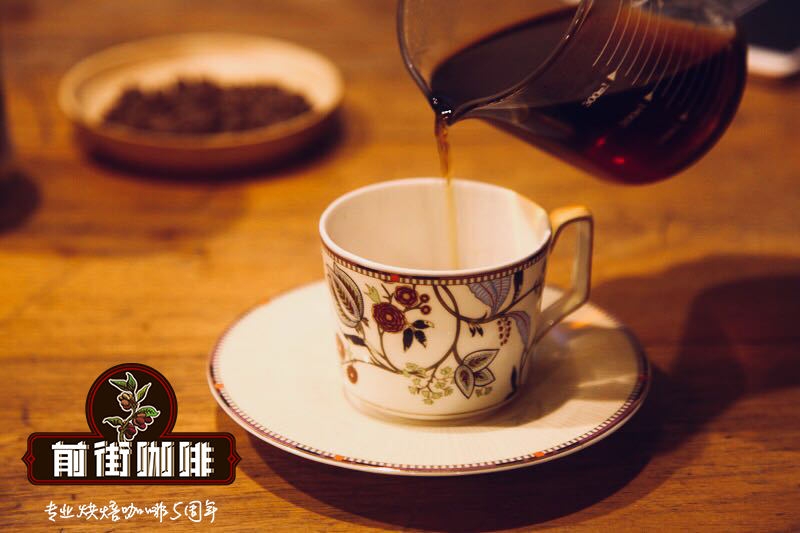The flavor characteristics of Yemeni mocha and Kenyan coffee, is it good?

Professional coffee knowledge exchange more coffee bean information please follow the coffee workshop (Wechat official account cafe_style)
Africa has always been one of the best coffee producers in the world, and is famous all over the world for its charming acidity and aroma, and Kenya is certainly not absent. Kenya is a big coffee country in East Africa and one of the most important and irreplaceable producers, next to the Republic of Ethiopia, the original place of coffee in the world. Coffee farmers are generally highly educated, studying fine agriculture and growing top coffee. Coffee producers in Kenya are mainly divided into two types, the first type is large estates, and the other is the so-called "small farmers". However, whether they are large coffee farms or small farmers, the coffee beans produced by them have been refined, the vast majority will be transported to the official Kenyan coffee shop for unified grading identification. The coffee bureau will first send samples of the coffee beans to be auctioned to interested buyers for trial, and hold an auction every Tuesday at the Nairobi Coffee Exchange Coffee Exchange in Nairobi, the capital of Kenya. Through a transparent auction mechanism and a dual-system parallel approach of official sales agents and independent sales agents, foreign buyers can also directly negotiate with corresponding producers to buy coffee. There is no need to go through the official auction board, so producers' hard work can be rewarded more fairly and equitably, without being exploited by the brokers in the middle. Because of this, coffee farmers are more willing to try their best to produce high-quality coffee beans in order to sell at a good price.
Yemen is the first country in the world to produce coffee on a large scale as a crop. Today, Yemeni coffee farmers still produce coffee in the same way as they did 500 years ago. Some coffee farmers still use animals (such as camels and donkeys) as a source of stone grinding power, compared with those Central and South American countries that use advanced machinery and equipment to deal with coffee beans in large quantities, and even Kenya, which has a short history of coffee. Yemen Mocha is the only living monument in the coffee world! So the Yemeni mocha you drink today is basically not much different from the "Arabian coffee" enjoyed by aristocratic European businessmen hundreds of years ago in Europe's oldest cafe in Piazza San Marco in Venice, Italy.
The authentic "mocha" is only produced in the Republic of Yemen in the southwest of the Arabian Peninsula and grows on the steep hillside of 9-2400 meters above sea level. It is also the oldest coffee in the world. More than 500 years ago, Yemen produced coffee in an ancient way. At the beginning of the 17th century, Yemeni coffee was first sold to Europe through the export of the ancient port of Mocha, which became the ancestor of the coffee trade. Europeans marvel at the fragrance of coffee and call the delicious coffee from the port of Mocha "mocha coffee", which is the origin of the name "mocha coffee".
Yemen is the first country in the world to produce coffee on a large scale as a crop. Today, Yemeni coffee farmers still produce coffee in the same way as they did 500 years ago. Some coffee farmers still use animals (such as camels and donkeys) as a source of stone grinding power, compared with those Central and South American countries that use advanced machinery and equipment to deal with coffee beans in large quantities, and even Kenya, which has a short history of coffee. Yemen Mocha is the only living monument in the coffee world! So the Yemeni mocha you drink today is basically not much different from the "Arabian coffee" enjoyed by aristocratic European businessmen hundreds of years ago in Europe's oldest cafe in Piazza San Marco in Venice, Italy.
Deep-baked Yemeni coffee is often as bitter and sweet as chocolate, so much so that today's fancy coffee flavored with chocolate sauce is called "mocha". So when you see the word "mocha coffee", it may be pure Yemeni coffee, neighboring Ethiopian coffee, or fancy coffee flavored with chocolate sauce. In any case, for super believers in mocha coffee, only real Yemeni coffee is qualified to be called "mocha coffee".
Important Notice :
前街咖啡 FrontStreet Coffee has moved to new addredd:
FrontStreet Coffee Address: 315,Donghua East Road,GuangZhou
Tel:020 38364473
- Prev

What is called anaerobic treatment? how does Luis Compos make anaerobic fermented coffee?
What is meant by anaerobic fermentation treatment? 100% ripe fruit is collected manually for anaerobic fermentation, and the average fermentation time is about 24 hours! At this time, there are four major elements of treatment: 1, the shade system can effectively block the sun, so that the pulp can produce more sugar, making the final coffee have more sweetness and wonderful acid value. 2. Stainless steel container (this is the most important) as soon as the coffee beans are picked
- Next

What are the different methods of coffee treatment? what are the differences in the flavor of coffee?
Tanning is a traditional method for the initial processing of coffee beans, and at present, almost all coffee-growing countries such as Ethiopia and Yemen still use solarization to treat raw beans. The sun treatment will first spread the ripe or half-ripe beans in the drying farm for natural drying. The specific time depends on the local climatic conditions, which usually takes two to four weeks. When the moisture of coffee beans
Related
- Beginners will see the "Coffee pull flower" guide!
- What is the difference between ice blog purified milk and ordinary milk coffee?
- Why is the Philippines the largest producer of crops in Liberia?
- For coffee extraction, should the fine powder be retained?
- How does extracted espresso fill pressed powder? How much strength does it take to press the powder?
- How to make jasmine cold extract coffee? Is the jasmine + latte good?
- Will this little toy really make the coffee taste better? How does Lily Drip affect coffee extraction?
- Will the action of slapping the filter cup also affect coffee extraction?
- What's the difference between powder-to-water ratio and powder-to-liquid ratio?
- What is the Ethiopian local species? What does it have to do with Heirloom native species?

